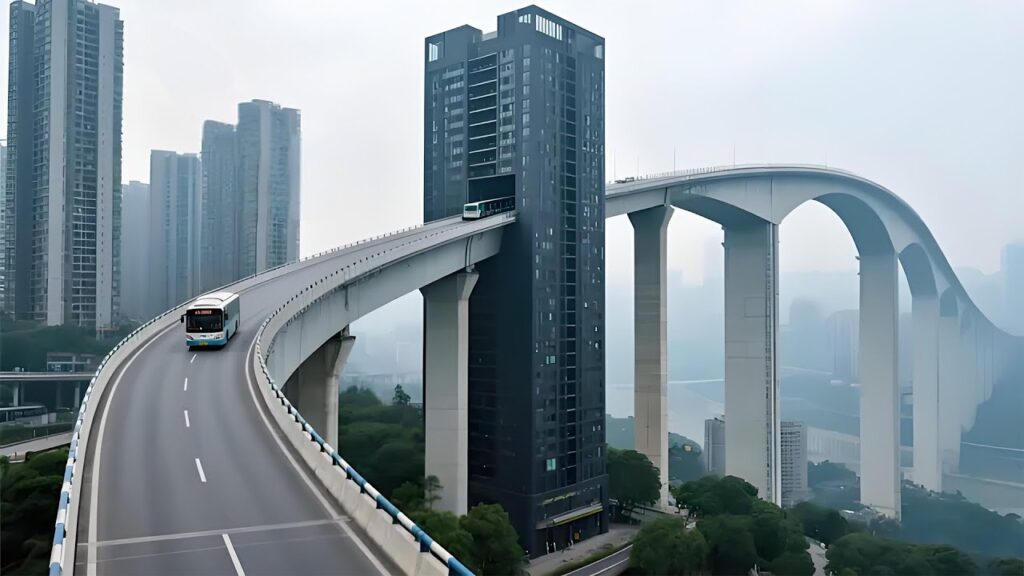Have you ever noticed how outdated some infrastructure feels? In the U.S., crumbling bridges and delayed trains are often accepted as “just the way things are.” Meanwhile, China is rewriting the rules with megastructures that span seas and high-speed rails that connect nations. This SEO-optimized blog post dives into the stark contrast between U.S. and Chinese infrastructure, exploring how China’s innovative approach is reshaping the global landscape. From the Deep Earth Taklamakan-1 Well to the Changtai Yangtze River Bridge, discover how China’s infrastructure revolution is setting new benchmarks for speed, scale, and sustainability.
The Infrastructure Gap: U.S. vs. China
U.S.: Aging and Stalled
The American Society of Civil Engineers reports that 43% of U.S. bridges are over 50 years old, with many classified as structurally deficient. The New York City subway, averaging just 16 km/h, faces daily delays due to outdated equipment. California’s high-speed rail, after 15 years of planning, has completed only a 190-km stretch, with costs escalating from $33 billion to $128 billion. Aging power grids struggle with extreme weather, causing frequent blackouts.
China: Speed and Scale
In 2023, China built or rebuilt 10,000 bridges, including world-class megastructures. Its high-speed rail network, spanning 45,000 km (over 70% of the global total), operates at 356 km/h. Projects like the Baihetan Hydropower Station power 40 million households, showcasing China’s dominance in clean energy. China completes similar projects 40% faster and 30% cheaper than the U.S., without compromising quality.
China’s Megaprojects: Engineering Marvels
Deep Earth Taklamakan-1 Well
In Xinjiang’s Tarim Basin, the Taklamakan-1 Well reaches 10,910 meters, making it Asia’s deepest and the world’s second-deepest scientific borehole. Using a domestically developed automated rig, Chinese engineers overcame extreme heat, pressure, and complex geology. They even converted seismic waveforms from 9,000–14,000 meters into audible frequencies, letting us “hear” the Earth’s depths.
Shenjiang High-Speed Railway Tunnel
Under the Pearl River Estuary, the Shenjiang Tunnel is the world’s deepest shield tunneling project for high-speed rail, at 106 meters below the seabed. The “Shenjiang” tunnel boring machine advances 15 meters daily, achieving 100% localization in TBM technology. With a 3 mm margin of error, it’s like assembling LEGO blocks underwater.
Changtai Yangtze River Bridge
The Changtai Yangtze River Bridge features a 350-meter-tall cable-stayed tower (equivalent to a 115-story building) and a 1,176-meter main span. Its flat-deck design integrates high-speed rail, expressways, and local roads, using 23,000 tons of steel—equivalent to three Eiffel Towers. This bridge sets new standards in efficiency and land use.
Why China Excels: A Development Model That Works
U.S.: Bureaucracy and Delays
U.S. infrastructure projects often stall due to lengthy approvals and political gridlock. For example, Boston’s Big Dig overran its budget by 220% and faced a fatal ceiling collapse.
China: Coordination and Vision
China’s success stems from:
- Streamlined Coordination: Centralized planning accelerates project timelines.
- Homegrown Innovation: From TBMs to automated rigs, China leads in engineering technology.
- Long-Term Vision: Investments prioritize scalability and sustainability.
Keywords: US infrastructure delays, China development model, engineering coordination, infrastructure planning.
China’s Transportation Revolution
China’s high-speed rail network spans 25,000 miles, connecting cities like Shanghai and Lhasa, reducing travel times, and boosting economic integration. The Qinghai-Tibet Railway tackled high-altitude hypoxia, permafrost, and environmental fragility with solutions like elevated bridges and thermal stabilizing rods.
China’s bridge-building is equally impressive:
- Beipanjiang Bridge: World’s highest at 565.4 meters.
- Hutong Yangtze River Bridge: First cable-stayed bridge combining railway and highway with a 1,092-meter span.
Techniques like prefabricated assembly and bridge rotation enhance efficiency and quality.
The Global Impact: China’s Infrastructure Leadership
China’s infrastructure isn’t just transforming its own landscape—it’s reshaping the global economic order. By exporting development solutions to developing nations, China is modernizing infrastructure worldwide. Projects in countries like Africa and Southeast Asia reflect its commitment to creating a more connected, livable world.
The New York Times noted, “Chinese infrastructure is reshaping the global economic order.” From bridges to clean energy megabases, China’s “Infrastructure Maniac” moniker reflects its relentless drive to innovate and build.
Lessons for the Future
China’s infrastructure success offers lessons for the world:
- Invest in Innovation: Domestic technology reduces costs and dependency.
- Prioritize Speed and Scale: Streamlined processes accelerate progress.
- Focus on Sustainability: Clean energy and efficient designs ensure long-term benefits.
As the U.S. repairs highways from the last century, China is building the future with projects like Shukrayaan-1 (Venus mission) and beyond, proving that ambition and innovation can overcome any challenge.
Conclusion: What’s Next for Global Infrastructure?
China’s infrastructure revolution—from the Deep Earth Taklamakan-1 Well to the Changtai Yangtze River Bridge—demonstrates what’s possible with vision and execution. While the U.S. grapples with aging systems, China’s megaprojects connect cities, empower economies, and inspire the world. What miracles will China’s “Infrastructure Maniac” create in the next decade? Share your thoughts in the comments!

